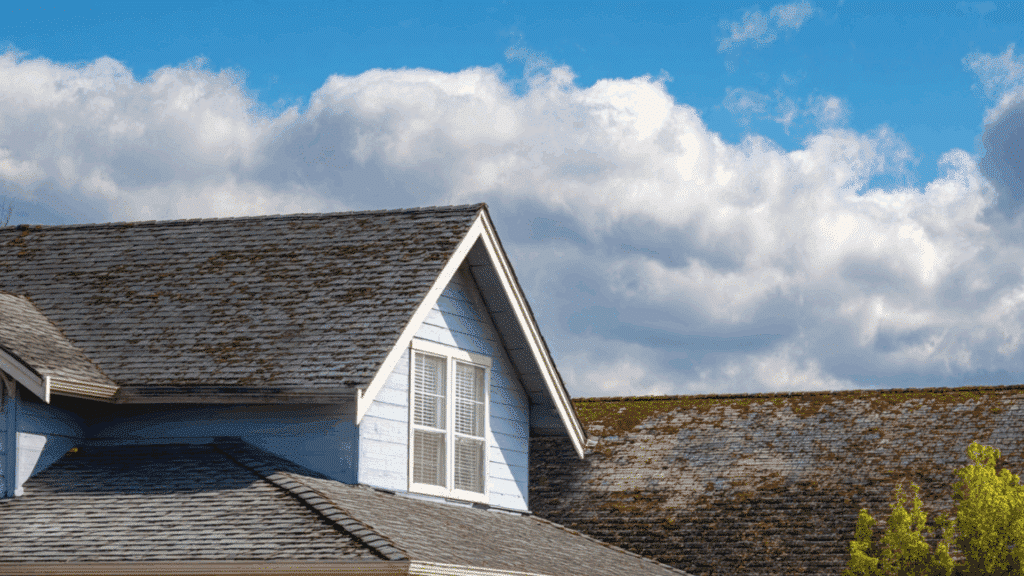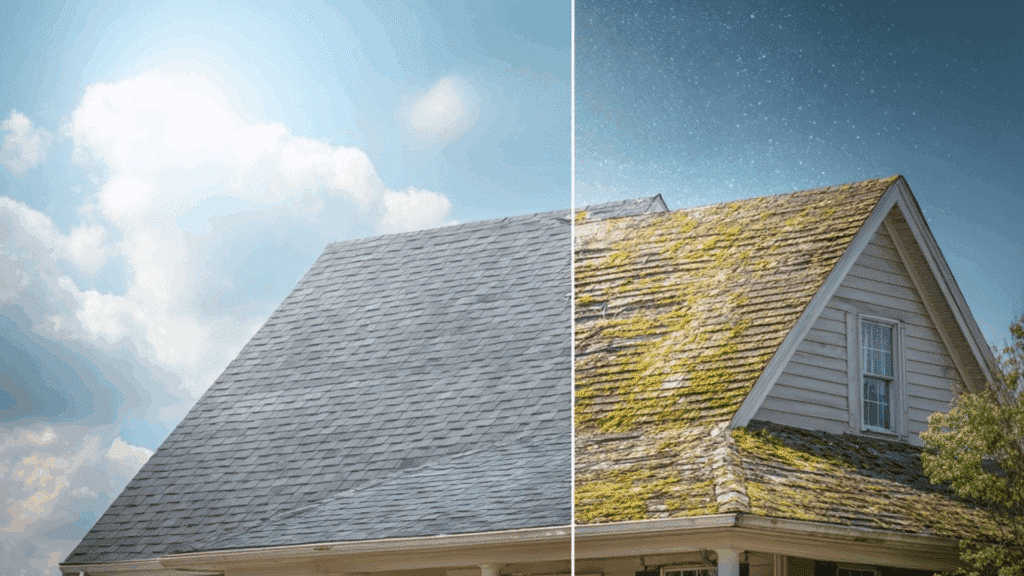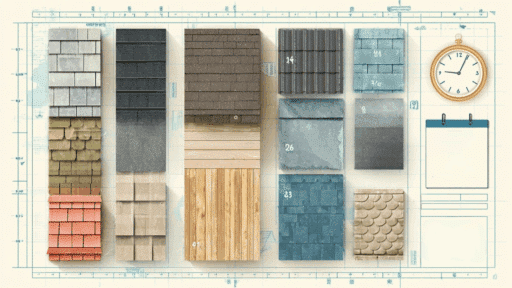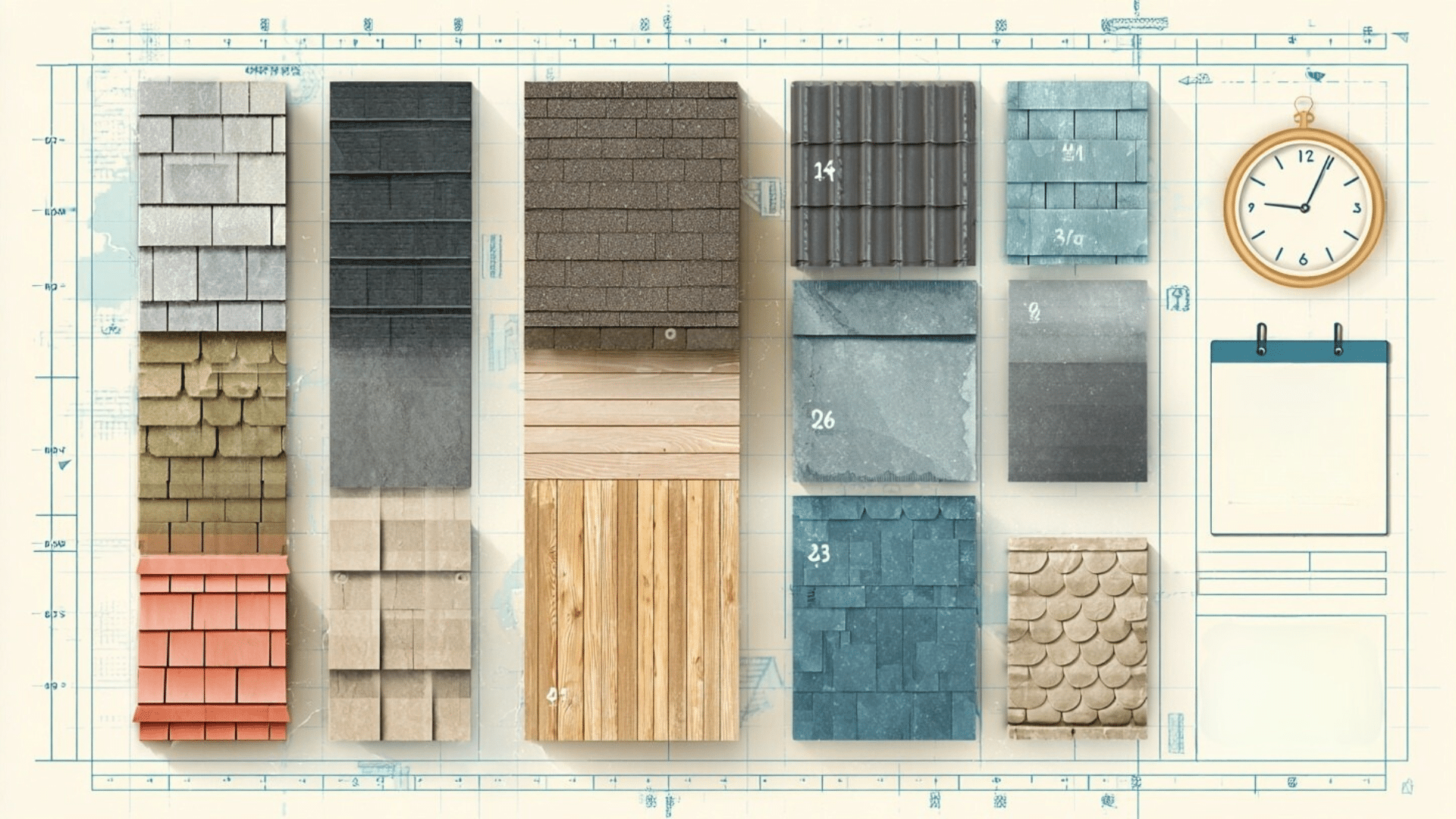Staring at your roof, wondering if it’s time for a replacement? You’re not alone in this expensive guessing game.
Most homeowners are unaware of how often should a roof be replaced, and contractors aren’t always honest about the timing.
Wait too long and you’ll face water damage, mold, and emergency repairs that cost way more than planned replacement. But replacing it too early means throwing away thousands on a roof that still had years left.
I’ll brief you exactly on how often should a roof be replaced based on your specific material, so you can time it right and protect your biggest investment.
How Often Should a Roof Be Replaced
The lifespan of your roof depends mainly on the material used. Some roofing types, such as asphalt shingles, are more affordable but tend to wear out sooner, while others, like slate or tile, can last for decades or even centuries with proper care.
Choosing the right material means balancing durability, budget, appearance, and climate compatibility.
1. Asphalt Shingles
Asphalt shingles are the most common and budget-friendly roofing option, lasting about 15 to 30 years. They’re easy to install and suit most homes, but may wear out faster in harsh weather.
2. Architectural Shingles
A thicker, more durable version of asphalt, architectural shingles typically last 25 to 40 years and offer a more stylish, long-lasting finish.
3. Metal Roofing
Metal roofs are known for their strength and weather resistance, with a lifespan of 40 to 70 years. They require minimal maintenance and perform well in extreme conditions.
4. Clay or Concrete Tiles
These heavy, fire-resistant tiles are ideal for hot climates and can last 40 to 100 years. They’re durable but may need extra roof support due to their weight.
5. Wood Shingles/Shakes
Wood roofs offer a natural look and usually last 20 to 40 years. They require regular maintenance and are susceptible to moisture or insect damage if left untreated.
6. Slate Roofing
Slate is highly durable and elegant, lasting 75 to over 200 years. It’s heavy and costly, but excellent for long-term performance and historic homes.
7. Synthetic/Composite Roofing
Made to mimic slate or wood, synthetic roofs last around 30 to 50 years. They’re lighter, durable, and require less maintenance.
8. Rubber (EPDM)
Used mainly on flat roofs, rubber roofing lasts 20 to 35 years. It’s flexible, water-resistant, and common in commercial or modern residential buildings.
Key Signs It’s Time to Replace Your Roof

Your roof won’t last forever, and ignoring the warning signs can lead to costly damage. Here are the most common indicators for when to replace roof.
1. Curling, Cracked, or Missing Shingles
Shingles are your roof’s first layer of protection. When they begin to curl, crack, or fall off, it opens your home up to leaks and long-term damage.
This is one of the most common signs of roof aging or storm damage.
What to look for: Granule loss, missing shingles, or uneven areas on the roof surface.
2. Frequent Leaks or Water Stains
Water leaking into your home from the ceiling is never a good sign. Even small stains can indicate a much larger issue with your roofing system.
Over time, moisture can ruin insulation, walls, and electrical work.
What to look for: Yellow or brown ceiling stains, mold growth, or musty smells.
3. Sagging Roof Deck
A sagging or dipping roofline may signal that the underlying structure has weakened. This can result from long-term water damage or the failure of materials.
If not addressed, it could lead to costly repairs or even a roof collapse.
What to look for: Visible dips or waves in the roof when viewed from the ground.
4. Light Coming Through the Attic
If you can see daylight through your attic roof boards, your roof has holes or cracks. These gaps allow water, pests, and air to enter, leading to damage and reduced energy efficiency.
It’s a subtle but profound warning sign.
What to look for: Beams of light or small holes in attic boards during the daytime.
5. Moss, Mold, or Algae Growth
Organic growth on your roof often indicates that moisture is being trapped. Over time, moss and mold can lift shingles, causing the wood underneath to rot.
In damp or shaded areas, this can significantly reduce the lifespan of your roof.
What to look for: Green patches, black streaks, or fuzzy growth on shingles.
6. Roof Age Exceeds Its Expected Lifespan
Even if there are no visible signs of damage, an old roof may already be compromised. Materials wear down over time, and exposure to weather takes a toll.
Replacing an old roof before it fails can prevent bigger problems.
What to look for: A roof that is 20–25+ years old (or older, depending on material).
7. Rising Energy Bills
An unexpected spike in heating or cooling bills might be caused by roof insulation failure. Air escapes through gaps in old or damaged roofs, making your HVAC system work harder.
This increases energy use and your monthly costs.
What to look for: Unexplained increases in utility bills over the past seasons.
Regional Differences: How Climate Affects Roof Lifespan
Roofing materials don’t age uniformly across the country. Your local climate plays a significant role in determining how often should a roof be replaced or repaired:
| Region | Example States | Key Challenges | Best Roofing Choices |
|---|---|---|---|
| Northeast | New York, Pennsylvania, Massachusetts | Snow load, ice dams, temperature swings | Insulated asphalt shingles, ice-dam protection |
| Southeast | Florida, Georgia, North Carolina, South Carolina | High humidity, mold, hurricanes, and wind-driven rain | Mold-resistant metal or hurricane-rated shingles |
| Midwest | Illinois, Michigan, Ohio | Hail, heavy snow, deep cold, poor ventilation | Impact-resistant shingles, strong attic airflow |
| Southwest | Arizona, New Mexico, Nevada | Intense UV, cracking, heat-related expansion | Clay/tile roofs, UV-stable materials |
| Pacific Northwest | Washington, Oregon | Constant moisture, moss/algae growth, and drainage issues | Algae-resistant shingles, moss control, and ventilation |
Roof Inspections: When and Why They Matter
Taking care of my roof doesn’t always mean replacing it; it starts with regular inspections. I make it a habit to check my roof every 1–2 years, especially after major storms or if the roof is more than 10 years old.
I look for cracked, curled, or missing shingles and check the flashing around chimneys and vents to make sure it’s sealed properly. I also inspect the gutters for blockages or granule buildup, which can mean my shingles are wearing out.
In the attic, I watch for leaks, stains, or mold. These simple checks help me avoid costly repairs and protect my home.
Find Out Your Estimated Roof Replacement Cost

Understanding the factors that influence roof replacement costs can help you budget more accurately.
From size and material to labor and extras, here’s how to estimate your total project cost step by step.
Step 1: Measure Your Roof Area
I started by calculating the total area of your roof. Use your home’s square footage and multiply it by a pitch multiplier to adjust for the slope. The steeper the roof, the higher the multiplier (typically between 1.1 and 1.5). Roofing contractors charge by the “square,” which equals 100 square feet.
Example: 2,000 sq ft home × 1.2 pitch = 2,400 sq ft roof = 24 squares
Step 2: Choose Your Roofing Material
Material choice has a significant impact on your total cost. Prices vary depending on durability, style, and region.
- Asphalt Shingles: $4–$8 per sq ft (most common and affordable)
- Metal Roofing: $7–$14 per sq ft (long-lasting and weather-resistant)
- Tile/Slate Roofing: $10–$30+ per sq ft (premium look and high durability)
Step 3: Add Labor Costs
Labor is a significant part of your roof replacement budget. It varies based on roof height, slope, accessibility, and local labor rates. Steeper or multi-story roofs typically require more expensive repairs.
Typical labor range: $1.50–$4.50 per sq ft
Step 4: Include Tear-Off and Disposal Fees
Before new materials are installed, the old roof often needs to be removed. Tear-off and disposal costs are typically added per square foot and may vary depending on the layers of existing roofing and disposal fees in your area.
Cost range: $1–$3 per sq ft.
Step 5: Factor in Extras
Additional costs can include underlayment, decking repairs, new flashing or ventilation, and required permits.
These extras may add a few hundred to several thousand dollars, depending on the condition of your roof and local regulations.
Typical permit fees: $150 to $500
Example Total Cost Calculation
If your home is 2,000 sq ft and you choose mid-range asphalt shingles:
- Roof size (with pitch): 2,400 sq ft
- Material + labor: $6.00/sq ft average
- Total estimated cost: 2,400 sq ft × $6 = $14,400
Roof Repair vs. Replacement
Understanding the key differences between repair and replacement can help you make the most informed choice for your home and budget.
| Category | Repair | Replacement |
|---|---|---|
| Roof Age | Under 10–15 years | Near or past lifespan |
| Damage Level | Minor or isolated | Widespread or recurring |
| Leaks | Small or occasional | Major or multiple |
| Cost | Lower upfront | Higher, but long-term value |
| Structure | No major damage | Decking issues or sagging |
| Benefit | Extends the current roof’s life | Full reset with added resale value |
Tips on How to Extend the Life of Your Roof
With proper care, you can add years to your roof’s lifespan and avoid costly repairs. Simple maintenance habits go a long way in protecting your home from top to bottom.
- Clean gutters regularly to prevent water buildup and roof damage.
- Trim overhanging tree branches to reduce debris and prevent impact damage.
- Remove moss, mold, and debris to avoid moisture retention and material decay.
- Ensure proper attic ventilation to prevent heat and moisture buildup.
- Address minor issues promptly to prevent small problems from escalating into major repairs.
Conclusion
Now you know exactly how often should a roof be replaced based on your specific material and climate. No more wondering if that contractor is trying to upsell you or if you’re waiting too long and risking severe damage.
Asphalt shingles typically need to be replaced every 15-30 years, while metal and tile roofs can last 40-100 years with proper care.
But your local weather, regular maintenance, and those warning signs I covered matter just as much as the calendar.
Got questions about your specific roof situation? Drop them below!








